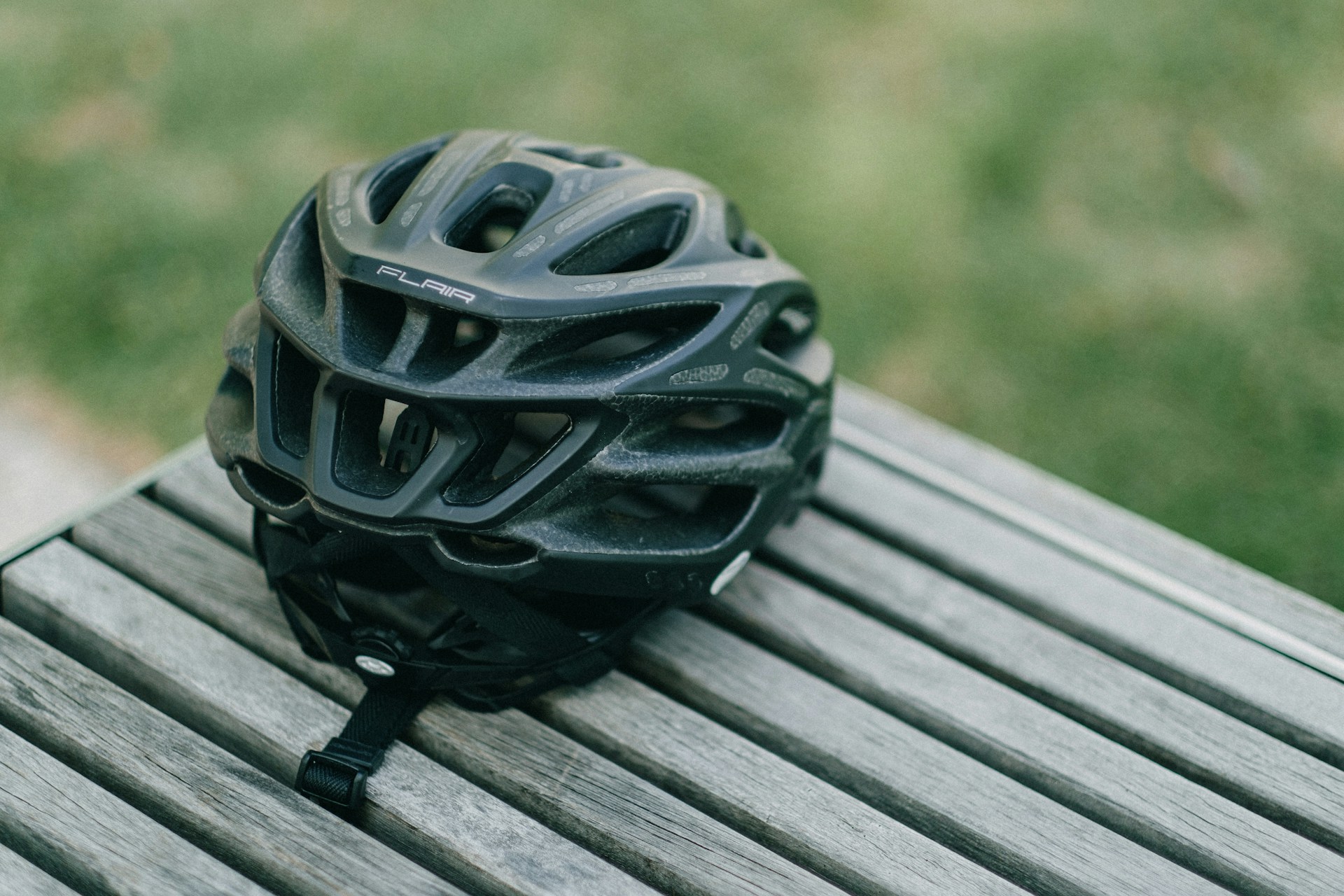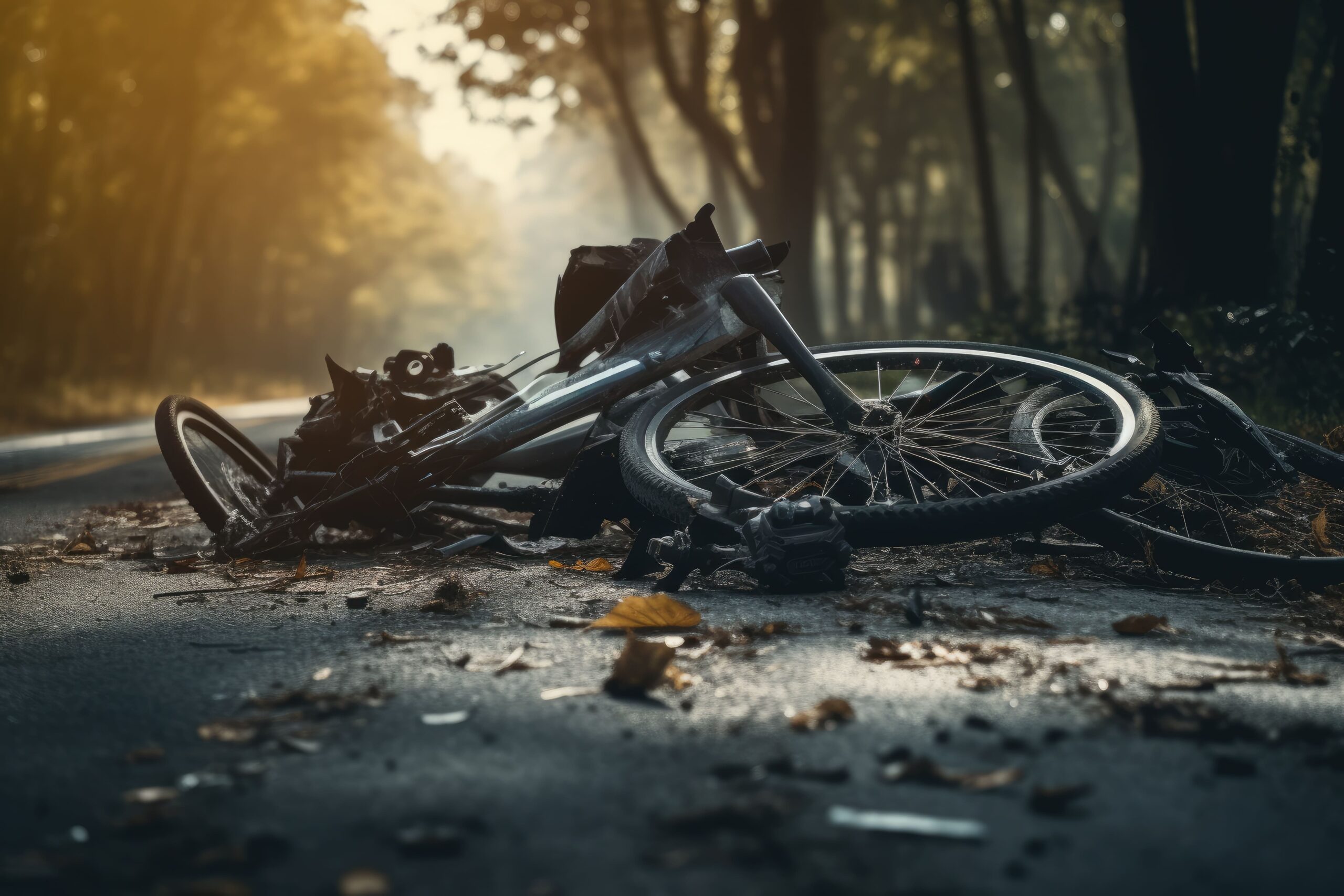Did you know that almost half of bicycle accidents involve a head injury? 47%, to be exact. Sure, many of you may say that you’ve ridden a thousand times without an injury, and that’s great. However, in the event of a collision, the head is often the most vulnerable part of the body.
Given the lack of proper cycling infrastructure nationwide and the inconsistent use of protective helmets, we’ve decided to dive deeper into the matter. Who knows, maybe it will prevent an undesirable crash or at least point you in the right direction if you or your loved ones get into one.
- Key Stats at a First Glance
- What Does Government Data Say?
- Types of Head Injuries in Bike Crashes
- Risk Factors Which Increase the Likelihood of Head Injury
- The Role of Helmets and Safety Gear
- Head Injury and Other Trends Over Time
- Consequences of Head Injuries from Bike Crashes
- What to Do If You Sustain a Head Injury After a Bike Crash?
- Preventive Measures and Recommendations
- Summary
- Resources
- Get a FREE case evaluation today
Key Stats at a First Glance
No two accidents are alike, but the national data indicate that around 22% to 47% of cycling collisions lead to a head injury, the percentage varies from state to state. The seriousness of the crash plays a major part here. For instance, Traumatic Brain Injuries result in about 60% of bicyclist deaths.
Children and senior adults are the most vulnerable age groups when it comes to head trauma. In fact, over a period of nine years, there were 600K emergency room visits involving child and adult cyclists with reported TBIs in the United States.
Although one of the recent studies demonstrates that a helmet can reduce the risk of sustaining a serious head injury by 60%, over 700 people lost their lives in bicycle accidents in the US because they weren’t wearing a helmet at the moment of the crash.
So far, the odds do not look that promising. However, one of the Centers for Disease Control and Prevention (CDC) reports states that head injury rates among cyclists can be reduced by up to 50%. Two main factors that can contribute to this reduction are enforced helmet laws and improved infrastructure.
What Does Government Data Say?
Bicyclist safety is closely monitored by multiple governmental agencies, including but not limited to the National Highway Traffic Safety Administration (NHTSA), the National Safety Council (NSC), and the Federal Highway Administration (FHWA). The national data show that over the past few years, both fatal and non-fatal bicycle accidents have been steadily increasing. This upward trend highlights the ongoing risks cyclists face on the roads.
Fatal Bicycle Crashes and Head Injuries
The number of deadly bicyclist crashes in the country spiked by an impressive 25% over the past decade. In 2023, there were 1,166 cyclist fatalities recorded across the US. Around 62% of the deceased weren’t wearing a protective helmet at the time of the accident.
The National Transportation Safety Board (NTSB) claims that the most severe instances of head trauma happen during a bicycle collision with a car. Considering the weight and speed of a motor vehicle, along with the lack of protection a rider has, the conclusion is entirely logical.
Non-Fatal Crashes: Emergency Visits and Long-Term Injuries
A cycling accident that does not lead to a fatal outcome can still involve serious risks, especially if there is head trauma involved. The CDC reports that around 120K emergency room visits related to non-fatal bicyclist injuries take place on a yearly basis. Surely, not all the reported instances involve head trauma or a cycling collision. In fact, only one-third of post-accident ER checkups involved riders with head injuries. At the same time, 67% of hospital admissions are for bicyclists with severe head traumas.
It must be mentioned that often, head injuries present themselves mildly but may have severe consequences that require prolonged treatment. Moreover, adult patients don’t show the same improvement rates as children.
Types of Head Injuries in Bike Crashes
Head injuries may be the trickiest of all. Some of them are visible right after the accident. In other cases, it takes time for a certain condition to present itself. If you know what to watch for and how to act in the first moments after the crash, it may help you avoid an unfavorable outcome.
Let’s start with the least serious traumas and move on to life-threatening head injuries. You should distinguish between:
-
Scalp abrasions
When you fall off the bike, you can scrape your head against the asphalt. Such scalp lacerations will hurt and may even bleed. However, the worst-case scenario will be a few stitches endured at the ER.
-
Concussions
If you hit the ground or any other hard surface with force, it will make your brain move a little. There may be no physical signs of injury — no cuts or bruises to indicate the trauma. However, should you start feeling dizzy, unable to focus, and nauseous, it is a clear call to see the doctor immediately.
-
Skull fracture
Where there are bones, there can be fractures, and your scalp isn’t an exception. A cracked skull is a serious injury and must be tended to right away. Unlike minor cuts, a skull fracture can cause swelling inside your head accompanied by severe headaches, confusion, and even loss of consciousness. In the worst cases, it leads to bleeding and serious brain infections.
-
Cerebral contusion
Your brain can bruise; that’s a fact. A harsh impact with a solid surface can result in a cerebral contusion. The injury may disrupt your brain function, which is never a good thing.
-
Diffuse Axonal Injury (DAI)
Tiny nerve fibers in your brain can tear from the force of the collision. When that happens, people fall into comas or suffer severe or irreversible impairments.
It is true that a trained medical expert can easily identify most types of trauma at the scene. However, if you spot the warning signs first, you can pursue timely treatment, not to mention prove the extent of your damages in a future legal claim.
Risk Factors Which Increase the Likelihood of Head Injury
Many serious head injuries happen because a few key risk factors line up at the wrong time. The more you know about the existing pitfalls, the better you can protect yourself on the road.
- Absence of helmet: Helmets were invented for a reason. Quality headgear will absorb most of the impact that your head otherwise would, which means that you’ll sustain only minor traumas.
- High speed: The fact that bicycles can’t compare in speed with motor vehicles does not mean that they can’t develop unsafe speed. Besides, the higher the speed, the more serious the injuries, including head trauma.
- Road defects: Bike accident statistics prove that cracked pavement, missing markings, potholes, and debris on the road can lead to accidents as severe as those involving cars.
- Decreased visibility: Poorly lit areas and bad weather pose a palpable threat to cyclists. However, your visibility on the road also counts. So, you shouldn’t neglect using proper lights and reflective items.
You can’t eliminate every chance of an accident, since many things are out of your control. However, you can turn protective measures into your riding habits and enhance your safety in that way.
The Role of Helmets and Safety Gear
Bicycle helmets aren’t just bicycling accessories that you can decide to wear or not to wear. Countless studies prove that protective headgear reduces the chance of head injury by 48% — that is, almost in half. Yet, these numbers seem insufficient for mandatory helmet laws to be adopted countrywide.
Different states have individual approaches to the matter. For example, in California, Delaware, and New Mexico, any rider under 18 years must wear a helmet. Yet, in Arizona, Kansas, and Michigan, as well as across many other states, there are no mandatory statewide regulations.
Even though all helmets serve the same primary purpose, they come in different types. The ‘where’ and the ‘how’ you ride can help you find the best gear:
- Road helmets: They are light and well-ventilated, so you can wear them on a regular basis even if traveling long distances.
- Mountain bike helmets: In case you prefer casual outings into the wild, a helmet with extra coverage will serve the purpose.
- Commuter helmets: These helmets are specially designed for urban use. They are often equipped with lights and reflective items to make you more noticeable on the busy roads of the city.
These days, you can find a helmet that suits any peculiar style preferences. However, you should remember that only quality gear is certified, sits well on your head, and can be properly secured to provide the highest level of protection.
Head Injury and Other Trends Over Time
How many people ride bikes in the US? Around 112 million people rode a bicycle in America at least once in 2024. These aren’t just impressive numbers. This is the historical maximum, which proves that things are changing and that cycling is becoming an increasingly favorable activity.
Even though many states haven’t adopted mandatory helmet laws yet, the increase in helmet use is noticeable. Recent data show that, back in 1991, only 17.6% of all cyclists wore a helmet; these days, it’s 46% of all bicyclists. The difference is more than impressive.
However, the statistical data concerning head injuries isn’t as bright. When comparing two decades — 2001–2010 and 2011–2020 — the researchers discovered that the number of TBIs treated at the ER increased by 25.8%. These scientific calculations prove that there’s much to be done to enhance bicyclist safety in America.
Consequences of Head Injuries from Bike Crashes
The impact of a head injury after a bike crash often goes beyond physical consequences. The challenges that many accident victims face after the collision range from material to emotional and legal.
-
Costly medication
While a mild concussion can cost you a few days off work, the story is different for those with serious head traumas. The more severe the injury, the more expensive and extensive the treatments will be.
-
Emotional trauma
Physical discomfort isn’t where your health issues end. Sometimes, the sustained injuries bring irreversible changes to a person’s life, making those who have experienced head trauma feel frustrated, anxious, and depressed.
-
Rehabilitation period
Some head injuries require time and effort to fully recover from. The road to regaining all functions may involve lengthy physical therapy sessions, cognitive exercises, and support groups.
-
Legal battles
The chances are that you haven’t fallen off the bike all of a sudden. This means that you will be filing compensation claims and dealing with uncooperative insurance agents at the same time you are trying to heal.
These consequences sure may feel daunting. However, you can share the burden with trusted bicycle accident attorneys, at least when it comes to the financial part of the case and its legalities. A skilled attorney at your side will ensure that you get full reimbursement of every bill and every second of your suffering.
What to Do If You Sustain a Head Injury After a Bike Crash?
Hardly anyone can imagine themselves in a situation like that. So, many will rationally wonder what to do after a bike crash, especially when you suspect that you’ve had a head trauma. These practical steps may help you avoid unnecessary physical and legal complications:
- Listen to your body: Take a few moments to assess your condition. Try to calm down as much as possible and determine if something seems off. You can sit or even lie down if you need to. It does not matter how you look; it matters how you feel.
- Call for help: Don’t be shy to contact 911 after you’ve been in an accident. The first responders can detect signs and symptoms that an untrained person can’t. On top of that, they will keep detailed records of the crash that will be useful later.
- Inspect the scene: A few quick shots of the accident scene and your immediate losses and injuries will help you build a stronger claim. However, don’t put your health on the line. If you feel dizzy or a medic tells you to rush to a hospital, follow the advice.
- Schedule a check-up: Sometimes a head trauma takes time to present clear signs of the injury, and a medic at the scene may miss it. Thus, if you feel unusual, and even if you don’t, pay your doctor a visit to stay on the safe side.
- Consult a lawyer: No matter how minor your immediate damages seem, you should speak with a legal professional after the accident. Many law firms, like Bicycle Accident Lawyers, offer free case evaluations these days. A skilled attorney can spot the details that you might miss and ensure a fair settlement that you deserve.
The key rule is not to rush. The stress of the situation can play a cruel trick and make you underestimate factors that matter.
Preventive Measures and Recommendations
You may think that a single rider can’t impact the overall safety situation in the area they cycle through. However, you’d be surprised at the variety of measures you can take to prevent an accident.
- Personal safety: Let’s start with the most obvious recommendation — wear protective gear, properly equip your bike, and follow the rules.
- Road infrastructure: You can improve the cycling conditions in your city. All it takes is noticing and reporting road defects and potentially dangerous spots to the authorities.
- City policies: Not all members of local governments are proactive when it comes to bicyclist safety. That is why, when the next elections arrive, vote for those who care instead.
- Educational campaigns: If you don’t have time to initiate programs and campaigns, you can at least join them. Simple steps like that matter.
Bicycle-friendly cities aren’t built overnight. You should understand that and never underestimate the achieved milestones, no matter how small and insignificant they seem.
Summary
Head injuries in bicycle accidents remain the most common group of traumas. Nearly a half of bike crashes (47%) result in a head trauma of varying degree. However, the trends can be changed. Every rider on US roads can enhance their own safety and that of others by simply wearing a helmet.
Surely, you can’t take on full responsibility for other people’s negligence. So, if a bike crash occurs, you can protect your legal rights and hold the responsible parties accountable. All it takes is a free consultation with a trained expert to make sure that your losses and suffering are settled in full!
Resources
- Road Traffic Injury Prevention: Bicycle
- Bicycle helmets — to wear or not to wear? A meta-analysis of the effects of bicycle helmets on injuries
- Fatality Facts 2023: Bicyclists
- Emergency Department Visits for Bicycle-Related Traumatic Brain Injuries Among Children and Adults
- Injury-Control Recommendations: Bicycle Helmets
- Statement on Bicycle Safety and the Promotion of Bicycle Helmet Use
- Bicyclists & Pedestrians
- Vehicle Services Special Vehicles
- Mexico: Helmet Law
- Bicycle Helmet Influence in the New Millennium on United States Head, Traumatic Brain Injury, Upper and Lower Body Injury Rates
- More Americans Rode a Bike Than Ever Before in 2024






